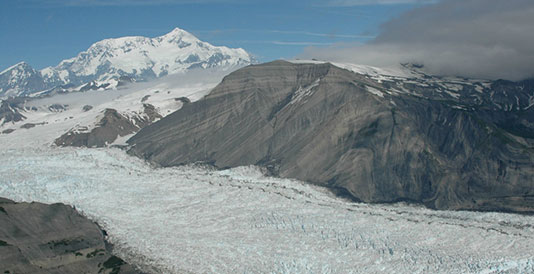 November 23, 2015 - Researchers for the first time have attempted to measure all the material leaving and entering a mountain range over more than a million years and discovered that erosion caused by glaciation during ice ages can, in the right circumstances, wear down mountains faster than plate tectonics can build them. The international study conducted by the Integrated Ocean Drilling Program and led by scientists from the University of Florida, The University of Texas at Austin and Oregon State University, adds insight into a longstanding debate about the balance of climate and tectonic forces that influence mountain building. It is published today in the Proceedings of the National Academy of Sciences. Researchers studied the St. Elias Mountains on the Alaskan coast and found that erosion accelerated sharply about 1 million years ago when global climate cooling triggered stronger and more persistent ice ages than times past.
November 23, 2015 - Researchers for the first time have attempted to measure all the material leaving and entering a mountain range over more than a million years and discovered that erosion caused by glaciation during ice ages can, in the right circumstances, wear down mountains faster than plate tectonics can build them. The international study conducted by the Integrated Ocean Drilling Program and led by scientists from the University of Florida, The University of Texas at Austin and Oregon State University, adds insight into a longstanding debate about the balance of climate and tectonic forces that influence mountain building. It is published today in the Proceedings of the National Academy of Sciences. Researchers studied the St. Elias Mountains on the Alaskan coast and found that erosion accelerated sharply about 1 million years ago when global climate cooling triggered stronger and more persistent ice ages than times past. "Humans often see mountain ranges as static, unyielding parts of the landscape,” said co-chief scientist John Jaeger, an associate professor of geology at the University of Florida. “But our work has shown that they are actively evolving along with, and responding to, Earth's climate, which just shows how truly dynamic and coupled this planet is."
UF News Release
PNAS Journal Article
Photo credit: Ken Ridgway, Purdue University











